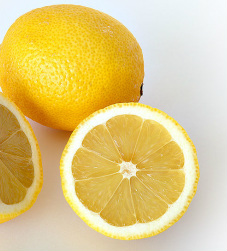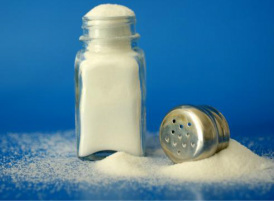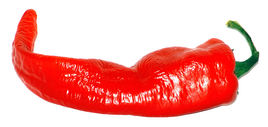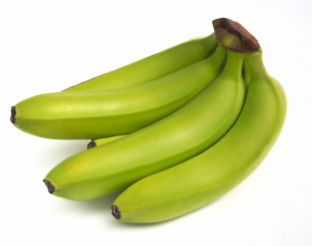Taken from this website:
An ideal diet, according to Ayurveda incorporates the six tastes prescribed in the literature and
comprises a wide variety of fresh fruits, grains and milk.
“Taste” means “Rasa”. It is the sensation perceived by the tongue. Each taste is due to predominance
of 2 great elements. Each taste has an effect on the body as well as mind. The basic principle of diet
in Ayurveda is that physical changes as well as mental effects can be observed after consumption
of different food types. In this way, food can directly and indirectly affect the three doshas of
an individual. We can achieve a balance in these three doshas by regulating diet.
comprises a wide variety of fresh fruits, grains and milk.
“Taste” means “Rasa”. It is the sensation perceived by the tongue. Each taste is due to predominance
of 2 great elements. Each taste has an effect on the body as well as mind. The basic principle of diet
in Ayurveda is that physical changes as well as mental effects can be observed after consumption
of different food types. In this way, food can directly and indirectly affect the three doshas of
an individual. We can achieve a balance in these three doshas by regulating diet.
Madhura (Sweet)

Honey - Image: Courtesy Wikipedia
Madhura means very appealing, pleasant or very sweet. Sweet
taste is due to the Water and
Earth elements. The sweet taste shows qualities or gunas such as cooling, heavy and unctuous.
Earth elements. The sweet taste shows qualities or gunas such as cooling, heavy and unctuous.
Physical effects: The sweet taste is related to strength and
stability of the body. It pacifies the
Vata and Pitta doshas. However, an excess of sweet can aggravate Kapha dosha. Sweet
taste is homologous to body since birth; small babies enjoy the sweet taste of breast milk.
Food with sweet taste is wholesome; it promotes longevity when consumed in moderation.
It enhances the growth of all seven tissue-elements. It is beneficial to the health of skin, senses
and general growth of the body.
Vata and Pitta doshas. However, an excess of sweet can aggravate Kapha dosha. Sweet
taste is homologous to body since birth; small babies enjoy the sweet taste of breast milk.
Food with sweet taste is wholesome; it promotes longevity when consumed in moderation.
It enhances the growth of all seven tissue-elements. It is beneficial to the health of skin, senses
and general growth of the body.
Psychological effects: Sweet taste is very pleasant and
exhibits pronounced satisfying and
gratifying effects. It increases cheerfulness, love and compassion. It gives the feeling of love
but if consumed in excess, it increases greed and attachment.
gratifying effects. It increases cheerfulness, love and compassion. It gives the feeling of love
but if consumed in excess, it increases greed and attachment.
Adverse effects: If a person consumes excess sweet food,
then his Kapha dosha aggravates.
It can lead to many diseases like obesity, diabetes, lethargy, increased cholesterol etc.
It can lead to many diseases like obesity, diabetes, lethargy, increased cholesterol etc.
Source: Foods with sweet taste include sugar, honey,
sugarcane juice, maple syrup and
dates to name a few. Foods like rice, wheat, milk and fruits like mango and grapes are also
good source of sweetness.
dates to name a few. Foods like rice, wheat, milk and fruits like mango and grapes are also
good source of sweetness.
Amla (Sour)

Lemons - Image: Courtesy Wikipedia
Amla means sour taste
and is made up of Earth and Fire elements. This taste has qualities
like lightness, hot and unctuous.
like lightness, hot and unctuous.
Physical effects: Sour taste increases the digestive power.
It exhibits a sharp taste, which
stimulates salivation and increases the appetite. It pacifies Vata but increases Pitta and Kapha.
It promotes strength and stability of tissue-elements. It regulates peristalsis; it regulates
downward movement of vata and helps in the digestion of food.
stimulates salivation and increases the appetite. It pacifies Vata but increases Pitta and Kapha.
It promotes strength and stability of tissue-elements. It regulates peristalsis; it regulates
downward movement of vata and helps in the digestion of food.
Psychological effects: Sour taste is very sharp. It brings
alertness to the mind and increases
attention. It is responsible for bringing appreciation but if consumed in excess it brings out
hate, jealousy.
attention. It is responsible for bringing appreciation but if consumed in excess it brings out
hate, jealousy.
Adverse effects: If a person consumes excess food with sour
taste, then he will
experience symptoms like excess thirst, hyperacidity and heartburn. A number of other
diseases like loss of skin tone, hyperacidity, skin rashes, gastritis and ulcerative colitis.
experience symptoms like excess thirst, hyperacidity and heartburn. A number of other
diseases like loss of skin tone, hyperacidity, skin rashes, gastritis and ulcerative colitis.
Source: Citrus fruits like limes, lemons and oranges are
good examples of amla food.
Other food products include sour cream, yogurt, vinegar & fermented food.
Other food products include sour cream, yogurt, vinegar & fermented food.
Lavana (Salty)

Salt - Image: Courtesy USA Today
Lavana means salty taste and it primarily gives relish to
the food. Salty taste is due
to the predominance of Water and Fire element. Salty taste exhibits qualities like oily,
heavy and hydrophilic in nature. Salty taste pacifies Vata but increases Pitta and Kapha.
to the predominance of Water and Fire element. Salty taste exhibits qualities like oily,
heavy and hydrophilic in nature. Salty taste pacifies Vata but increases Pitta and Kapha.
Physical effects: Salty taste has a laxative effect and it
removes obstruction from the
channels (srotas). It liquefies mucus and clears the channels. Apart from this, it improves
digestion and increases salivation. It balances the blood pressure by maintaining electrolytes
in the body. It gives muscles strength.
channels (srotas). It liquefies mucus and clears the channels. Apart from this, it improves
digestion and increases salivation. It balances the blood pressure by maintaining electrolytes
in the body. It gives muscles strength.
Psychological effects: Salty taste enhances the taste of
food so one can enjoy it. This taste
brings interest and enthusiasm. Hence, generally people show a kind of addiction to the
salty things.
brings interest and enthusiasm. Hence, generally people show a kind of addiction to the
salty things.
Adverse effects: Excess consumption of Salty foods causes
ill effects like premature
graying of hair, wrinkles, baldness and inflammatory diseases. It causes water retention
leading to edema and increase in blood pressure. It also increases Pitta dosha leading to
hyperacidity.
graying of hair, wrinkles, baldness and inflammatory diseases. It causes water retention
leading to edema and increase in blood pressure. It also increases Pitta dosha leading to
hyperacidity.
Source: Sea salt, rock salt and table salt and predominant
sources for salty taste.
Apart from this, consumption of salty food like salted chips, salted nuts also act as sources of this taste.
Apart from this, consumption of salty food like salted chips, salted nuts also act as sources of this taste.
Katu (Pungent)

Red Cayenne Pepper - Image: Courtesy Wikipedia
Katu means pungent or very hot taste. It shows predominance
of Fire and Air elements.
Pungent food shows qualities like hot, dry and light nature. Pungent taste pacifies Kapha
but it aggravates Pitta and Vata.
Pungent food shows qualities like hot, dry and light nature. Pungent taste pacifies Kapha
but it aggravates Pitta and Vata.
Physical effects: Pungent taste improves digestion. It
stimulates the digestive fire (Agni)
in the body. It improves circulations and clears the channels. It has an anti-spasmodic
action. It causes instant watering of eyes and nose if consumed directly. It produces heat
in the body and breaks clots in the circulation.
in the body. It improves circulations and clears the channels. It has an anti-spasmodic
action. It causes instant watering of eyes and nose if consumed directly. It produces heat
in the body and breaks clots in the circulation.
Psychological effects: Pungent taste also has sharp and
penetrating effects on the mind.
It aids the clarity of mind, increases attention and brings clarity of perception.
It aids the clarity of mind, increases attention and brings clarity of perception.
Adverse effects: Pungent food, if consumed in excess causes
irritation and inflammation
and leads to aggravation of Pitta. It destroys virility. It can cause diarrhea, peptic ulcers,
giddiness, insomnia and some skin conditions.
and leads to aggravation of Pitta. It destroys virility. It can cause diarrhea, peptic ulcers,
giddiness, insomnia and some skin conditions.
Source: Chili pepper, cayenne pepper, habanera pepper and
black pepper are sources
of this taste. Apart from this, spices such as mustard, ginger, garlic and onion are also pungent in taste.
of this taste. Apart from this, spices such as mustard, ginger, garlic and onion are also pungent in taste.
Tikta (Bitter)

Bitter Groud - Image: Courtesy Wikipedia
Tikta meaning bitter taste produces a very unpleasant taste
in mouth. In spite of its
unpleasant taste, it is important to incorporate this taste in our meal. Bitter taste
shows predominance of Air and Ether elements. It is cool, dry and light in character.
unpleasant taste, it is important to incorporate this taste in our meal. Bitter taste
shows predominance of Air and Ether elements. It is cool, dry and light in character.
Physical effects: It demonstrates a strong wormicidal
action. It has appetizing effects
and reduces burning sensation. It gives firmness to the skin and muscles and
reduces skin diseases by its anti-inflammatory effects. It also demonstrates a cleansing effect.
and reduces burning sensation. It gives firmness to the skin and muscles and
reduces skin diseases by its anti-inflammatory effects. It also demonstrates a cleansing effect.
Psychological effects: Bitter taste helps to withhold the
mind and senses from objects of desire.
Adverse effects: Bitter food consumed in excess will produce
adverse effects on the body.
Further, this taste exhibits spermicidal effects. Excess consumption of bitter taste leads to
loss of strength and energy and increased Vata dosha.
Further, this taste exhibits spermicidal effects. Excess consumption of bitter taste leads to
loss of strength and energy and increased Vata dosha.
Source: Sources of this taste are bitter gourd and bitter
melon. Herbs like neem
(Azadirecta Indica) are also bitter in taste.
(Azadirecta Indica) are also bitter in taste.
Kashaya (Astringent)

Bananas - Image: Courtesy Wikipedia
Kashaya means astringent taste that occurs due to the
predominance of Air and
Ether elements. It is heavy, dry and cooling in nature. It gives an immediate drying
sensation in mouth on consumption.
Ether elements. It is heavy, dry and cooling in nature. It gives an immediate drying
sensation in mouth on consumption.
Physical effects: By its drying property, kashaya absorbs
water and helps in binding
stools. It constricts the different channels of the body. It purifies blood by its anti-inflammatory
effects. It reduces Pitta and Kapha but it increases Vata dosha in the body.
stools. It constricts the different channels of the body. It purifies blood by its anti-inflammatory
effects. It reduces Pitta and Kapha but it increases Vata dosha in the body.
Psychological effects: Astringent substances help the mind
to become collected
or organized. But excess consumption of this taste causes insomnia, anxiety and depression.
or organized. But excess consumption of this taste causes insomnia, anxiety and depression.
Adverse effects: Excess use of astringent food causes
choking sensation and difficulty
in speaking. It causes constipation along with distension of abdomen. It affects the
sperm count and can even reduce the sex drive. Prolonged consumption may lead to
emaciation of the body.
in speaking. It causes constipation along with distension of abdomen. It affects the
sperm count and can even reduce the sex drive. Prolonged consumption may lead to
emaciation of the body.
Source: Unripe banana, chickpeas, alum and okra are good
sources of astringent taste.





